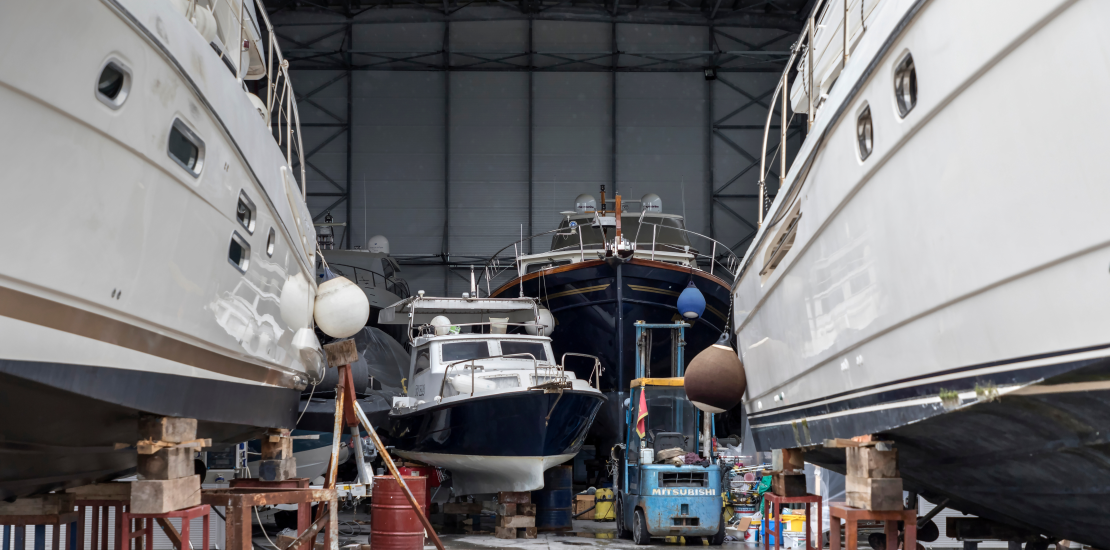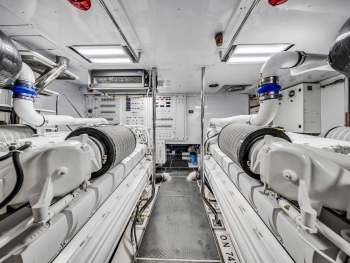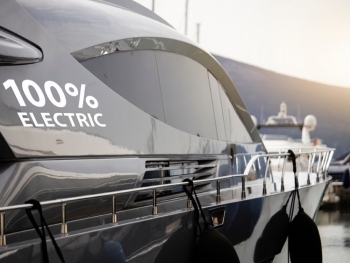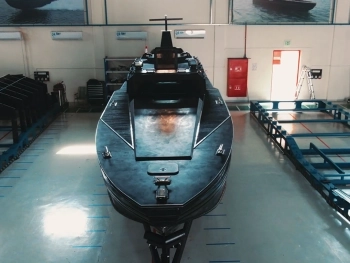Buying a yacht is one of life’s great luxuries - but keeping it in perfect condition is a long-term commitment. Many first-time owners focus on the purchase price, overlooking the ongoing maintenance, storage, and operational costs that define true ownership.
From routine upkeep to surprise repairs, the annual maintenance cost of a yacht typically ranges from 7–15% of its value. That means a $1 million yacht could cost $70,000–$150,000 a year just to maintain - and that’s before upgrades or fuel.
In this guide, we’ll break down what yacht owners often underestimate, and how smart planning (and smart yacht selection) - such as choosing an innovative, low-maintenance builder like Perulla - can make ownership smoother and more sustainable.
1. The Real Cost of Yacht Ownership
When you buy a yacht, you’re not just buying the boat - you’re committing to a lifestyle that demands upkeep. Every system, surface, and sensor requires care, especially in saltwater environments.
The typical annual budget includes:
| Expense Category | Estimated Annual Cost (% of Yacht Value) | Notes |
|---|---|---|
| Routine Maintenance | 5–10% | Cleaning, painting, engine service, anti-fouling |
| Crew & Management | 2–5% | Salaries, insurance, certifications |
| Dockage & Storage | 1–3% | Marina fees, drydock, winter storage |
| Insurance & Registration | 1–2% | Based on yacht size and cruising region |
| Unexpected Repairs | Variable | Systems, electronics, hull damage, refits |
| Depreciation | 5–10% | Depends on brand, condition, and age |
The lesson? A $2 million yacht might realistically cost $200,000–$300,000 per year to own - not including fuel or long-term upgrades.
2. Routine Maintenance: The Backbone of Reliability
Routine maintenance isn’t glamorous, but it’s what keeps your yacht seaworthy, safe, and valuable.
2.1 Hull Care
- Anti-Fouling Paint: Applied annually or biannually to prevent marine growth.
- Hull Cleaning: Monthly cleaning in warm climates prevents drag and protects finishes.
- Polishing and Waxing: Keeps gelcoat or paint surfaces UV-protected.
💡 Tip: Yachts built with polyethylene hulls (like Perulla’s) require significantly less hull care - no polishing, waxing, or anti-osmosis treatments needed.
2.2 Engines & Systems
- Oil & Filter Changes: Typically every 100 hours or annually.
- Cooling Systems: Regular flushes prevent corrosion.
- Batteries & Electrical Systems: Periodic testing and replacement of worn components.
2.3 Deck & Fittings
Saltwater corrodes everything - stainless fittings, rails, and teak require constant cleaning, sealing, and lubrication.
2.4 Electronics
Navigation systems, radars, and autopilots are highly sensitive to moisture and software updates. Annual inspection by a marine technician is essential.
3. Hidden Costs Many Owners Miss
3.1 Haul-Outs and Yard Time
Even with perfect care, every yacht needs to come out of the water periodically:
- Bottom inspection and paint: Every 1–2 years
- Propeller and shaft maintenance: Every 3–5 years
- Through-hull fittings and anodes: Regular checks for corrosion
Haul-out costs depend on size and region - anywhere from $2,000 to $10,000+ per lift.
3.2 Dockage and Mooring
Marina fees are often underestimated:
- Prime marinas in Monaco, Miami, or Palma can charge $100–$300 per foot per year.
- Seasonal surcharges and electricity fees add up fast.
- Remote anchoring or private docks can reduce costs - but limit convenience.
3.3 Crew and Professional Services
For yachts over 60 feet, crew is not a luxury - it’s a necessity.
| Role | Average Annual Salary |
|---|---|
| Captain | $70,000–$150,000 |
| Engineer | $60,000–$100,000 |
| Steward(ess) | $40,000–$80,000 |
| Chef | $60,000–$100,000 |
Add insurance, food, and travel costs, and a full crew can easily reach $200,000+ annually.
3.4 Insurance and Registration
-
Insurance: Premiums depend on hull value, cruising area, and usage type (private or charter).
Typical range: 0.7%–2% of yacht value per year. - Registration & Surveys: Initial documentation and periodic inspections required by most flag states.
3.5 Depreciation and Refit
Even with the best care, yachts depreciate:
- The first 5 years see the steepest decline (often 25–35%).
- Brands with durable, innovative construction - like Perulla’s polyethylene hulls - can help slow depreciation through longevity and reduced cosmetic wear.
- Every 5–10 years, refits (engines, interiors, paint, electronics) can cost 10–30% of the vessel’s value.
4. Environmental and Climate Impacts
4.1 Saltwater and UV Damage
Sun and salt are relentless. Fiberglass gelcoats fade, wood dries out, and metal corrodes - especially in tropical climates.
Polyethylene and other thermoplastics, by contrast, don’t oxidize or delaminate, making them ideal for warmer regions.
4.2 Regional Cost Variations
Maintenance costs differ worldwide:
- Mediterranean: Highest dockage and refit prices.
- Caribbean: Expensive imports but cheaper labor.
- Southeast Asia: Growing infrastructure, lower overall costs.
Yacht owners often underestimate these geographical cost swings when planning cruising routes.
5. Smart Ownership: How to Control Maintenance Costs
5.1 Preventive Maintenance
Regular, scheduled service prevents expensive breakdowns. Many owners adopt digital maintenance logs to track every replacement and inspection.
5.2 Material Choice
Innovative materials can dramatically cut upkeep:
- Polyethylene Hulls (HDPE): No corrosion, no paint, minimal cleaning.
- Aluminum: Easy repair and long lifespan.
- Composites: Lightweight but need careful sealing.
5.3 Hybrid and Electric Systems
Hybrid propulsion and electric systems reduce mechanical wear, oil changes, and fuel costs - lowering lifetime operating expenses.
5.4 Professional Management
Yacht management firms can negotiate dockage, oversee maintenance, and prevent scheduling conflicts - saving money long-term.
5.5 Charter Offset Programs
Owners who list their yachts for selective chartering can offset 30–50% of annual maintenance costs - if managed properly.
6. The Hidden Value of Low-Maintenance Design: The Perulla Example
Perulla’s design philosophy focuses on engineering out maintenance burdens rather than managing them after the fact.
Key advantages include:
- Polyethylene hulls that resist impact, corrosion, and UV damage.
- Simplified systems that reduce mechanical complexity.
- Low surface maintenance - no need for polishing or anti-osmosis work.
- Exceptional durability, extending the yacht’s usable life and resale value.
By focusing on smart material selection and efficient design, Perulla yachts offer a long-term ownership model that’s both luxurious and economical.
7. Planning Ahead: Budgeting for Peace of Mind
To avoid surprises, use this simple rule of thumb:
Set aside 10% of your yacht’s value annually for maintenance and operation.
Then add reserves for:
- Major refits every 7–10 years
- Insurance and mooring increases
- Technology upgrades every 3–5 years
Building maintenance into your financial plan ensures your yacht remains a pleasure - not a burden.
Yacht ownership is a dream come true - but every dream requires care.
Understanding the true cost of maintenance is the key to long-term satisfaction, performance, and value retention.
Fiberglass yachts may demand regular polishing and refits, while polyethylene designs like Perulla’s can cut those costs significantly through engineering innovation and durability.
Whether you’re buying new or pre-owned, remember: a well-maintained yacht doesn’t just look beautiful - it stays seaworthy, safe, and ready for adventure.
Because in yachting, the best return on investment isn’t resale - it’s reliability.












